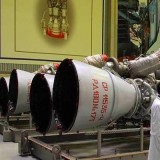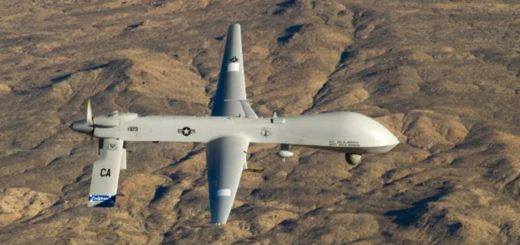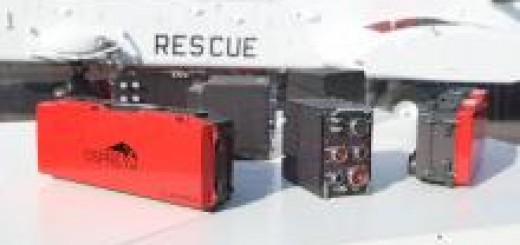Brazil confirms that three more countries are close to buying the C-390 transport aircraft

{loadposition bannertop}
{loadposition sidebarpub}
As reported by Poder Aéreo on April 4, 2025, at the LAAD 2025 conference held in Rio de Janeiro, Brazilian Minister of Defense José Múcio announced that Brazil is currently engaged in negotiations with Poland, Finland, and Türkiye regarding the potential acquisition of the C-390 Millennium tactical transport aircraft produced by Embraer. The announcement came just days after Sweden officially confirmed the purchase of four C-390s, securing production slots and becoming the first Nordic and fifth NATO country to select the aircraft. Múcio emphasized the government’s optimism regarding the expansion of C-390 exports, highlighting the aircraft’s growing international appeal.Follow Army Recognition on Google News at this link
To date, confirmed customers and selected operators of the C-390 include Brazil, Portugal, Hungary, the Netherlands, Austria, Czech Republic, South Korea, Sweden, and an undisclosed customer. (Picture source: Embraer)
The interest from Poland, Türkiye, and Finland reflects their respective efforts to modernize their aging airlift fleets. Poland currently operates a mixed transport fleet that includes five C-130E and three C-130H Hercules aircraft, alongside 16 CASA C-295s and 23 PZL M28 Skytrucks. Finland maintains a smaller airlift capability, operating two C-295Ms and six PC-12 NGs, and participates in NATO’s Strategic Airlift Capability with access to C-17 Globemaster III aircraft. Türkiye, for its part, operates a diverse mix of transport aircraft, including 13 C-130E and six C-130B Hercules undergoing modernization, 45 CN-235s, and 10 Airbus A400Ms, with six more A400Ms planned and 12 second-hand C-130Js to be procured from the UK. In this context, the C-390 offers an alternative with higher speed, greater payload, and broader mission versatility.
Interest in the C-390 and its tanker variant, the KC-390, has increased rapidly. To date, confirmed customers and selected operators include Brazil, Portugal, Hungary, the Netherlands, Austria, Czech Republic, South Korea, Sweden, and an undisclosed customer. Brazil initially ordered 28 units, later revised to 22; Portugal confirmed five units, receiving the first in 2022; Hungary has taken delivery of one of two aircraft ordered; the Netherlands signed for five units; Austria will receive four; and the Czech Republic selected two aircraft, one of which is expected in 2025. South Korea is to receive three aircraft by 2026. The current global fleet reports mission completion rates exceeding 99%, with operators praising the aircraft’s reliability and adaptability in multi-role operations.
The two most recent developments have further expanded the program’s international relevance. Sweden officially confirmed its acquisition of four C-390s on April 1, 2025, after selecting the aircraft in November 2024. This purchase will replace the Royal Swedish Air Force’s five C-130Hs and one KC-130H, which operated under the local designation TP 84. Sweden’s Ministry of Defense emphasized the importance of interoperability, life-cycle support, and logistical synergies within Europe. Meanwhile, Embraer and Denel of South Africa signed a Memorandum of Understanding (MoU) to cooperate on aerostructure manufacturing, maintenance, repair, and overhaul of the KC-390. Denel is positioning itself as an industrial partner as South Africa evaluates the KC-390 to replace its legacy military airlift platforms. The aircraft’s ability to operate from unpaved runways and rapidly switch between configurations makes it especially suited to African operational needs.
In addition to confirmed contracts, Embraer is currently in talks with numerous other countries. These include India, where discussions center around a potential order of up to 80 units, and Mexico, which has hosted multiple visits by Embraer in a bid to interest the U.S. Air Force in a KC-390 variant for refueling operations. Other prospective buyers include Colombia, Chile, Egypt, Saudi Arabia, the United Arab Emirates, Greece, Morocco, Uzbekistan, and Rwanda. A recent Embraer presentation listed Morocco, the UAE, and Chile as new “users” of the C-390. In Europe, talks are ongoing with Greece, Slovakia (which selected the aircraft in December 2024), and Poland. Notably, Embraer has proposed establishing a final assembly line for the C-390 in Poland to meet EU demand. This facility is projected to generate $1 billion in economic value and create 600 jobs. Finland’s interest is a new development as the country had not previously expressed views on the aircraft.
The current C-390 fleet has recorded operational readiness levels over 93% and mission success rates above 99%, and the aircraft has performed a wide range of missions including humanitarian operations, aerial refueling, medevac, and combat resupply. (Picture source: Twitter/@SA_Defensa)
Türkiye’s expanding defense partnership with Embraer is also noteworthy. At LAAD 2025, Turkish Aerospace (TUSAŞ) and Embraer signed an MoU to explore cooperation on the commercial E2 jet program, with discussions potentially extending to the C-390. Turkish Aerospace aims to leverage its industrial capabilities in final assembly, composite structures, flight testing, and painting. This MoU was signed in the presence of senior officials from both countries, including Brazil’s Vice President Geraldo Alckmin. Though not yet confirmed as a buyer, Türkiye’s existing need to modernize and diversify its fleet and its defense industrial cooperation with Embraer suggest the C-390 could eventually enter Turkish service.
The C-390’s development began in the mid-2000s as Embraer sought to offer a jet-powered alternative to the C-130 Hercules. With early government support totaling $440 million and a $1.5 billion contract to develop prototypes, the aircraft first flew in February 2015. Its design includes twin IAE V2500-E5 turbofans, full fly-by-wire controls, and NATO interoperability. Unlike turboprop competitors, the C-390 was designed from the outset for higher speed and payload capacity. Embraer integrated technologies from its E-Jet family while partnering with international suppliers including Rockwell Collins, BAE Systems, Aero Vodochody, OGMA, and FAdeA. The aircraft entered Brazilian service in 2019 and has since been delivered to several air forces, including Portugal (2022) and Hungary (2024).
The average cost of a C-390 Millennium is estimated at €80 million per unit. The aircraft has been marketed as offering a lower operating cost per flight hour compared to the C-130J while also delivering greater speed, payload, and flexibility. The current fleet has recorded operational readiness levels over 93% and mission success rates above 99%, and the aircraft has performed a wide range of missions including humanitarian operations, aerial refueling, medevac, and combat resupply. Brazilian Air Force C-390s have been deployed in domestic disaster relief, in Haiti and Ukraine for humanitarian missions, and in Antarctica for resupply, while also participating in international exercises like Salitre IV and Culminating in the United States.
The C-390’s technical specifications reinforce its suitability for modern airlift needs. It measures 35.2 meters in length, 11.84 meters in height, and has a wingspan of 35.05 meters. Powered by two IAE V2500-E5 turbofan engines, it can cruise at 470 knots (Mach 0.8), carry up to 26 tons of payload, and operate from unpaved or semi-prepared runways, normally operating from a 4,000 ft (approximately 1219.2 meters) semi-prepared soft airstrip. The internal cargo hold is 18.5 meters long, 3.45 meters wide, and 2.95 meters high. It can transport two M113 armored vehicles, one H-60 helicopter, or 80 troops. It supports low-velocity and high-altitude parachute drops, carries 74 stretchers for medevac, and can perform aerial refueling with Cobham pods. Additional features include advanced avionics (Rockwell Collins Pro Line Fusion), directional infrared countermeasures (DIRCM), RWR, fly-by-wire flight controls, HUDs, and a cargo handling system developed with DRS Defense Solutions. With auxiliary tanks, the ferry range exceeds 8,000 kilometers, making it a strategic asset for global deployments.
The internal cargo of the C-390 hold is 18.5 meters long, 3.45 meters wide, and 2.95 meters high, allowing the Brazilian transport aircraft to transport two M113 armored vehicles, one H-60 helicopter, or 80 troops. (Picture source: Brazilian Air Force)

{loadposition bannertop}
{loadposition sidebarpub}
As reported by Poder Aéreo on April 4, 2025, at the LAAD 2025 conference held in Rio de Janeiro, Brazilian Minister of Defense José Múcio announced that Brazil is currently engaged in negotiations with Poland, Finland, and Türkiye regarding the potential acquisition of the C-390 Millennium tactical transport aircraft produced by Embraer. The announcement came just days after Sweden officially confirmed the purchase of four C-390s, securing production slots and becoming the first Nordic and fifth NATO country to select the aircraft. Múcio emphasized the government’s optimism regarding the expansion of C-390 exports, highlighting the aircraft’s growing international appeal.
Follow Army Recognition on Google News at this link
To date, confirmed customers and selected operators of the C-390 include Brazil, Portugal, Hungary, the Netherlands, Austria, Czech Republic, South Korea, Sweden, and an undisclosed customer. (Picture source: Embraer)
The interest from Poland, Türkiye, and Finland reflects their respective efforts to modernize their aging airlift fleets. Poland currently operates a mixed transport fleet that includes five C-130E and three C-130H Hercules aircraft, alongside 16 CASA C-295s and 23 PZL M28 Skytrucks. Finland maintains a smaller airlift capability, operating two C-295Ms and six PC-12 NGs, and participates in NATO’s Strategic Airlift Capability with access to C-17 Globemaster III aircraft. Türkiye, for its part, operates a diverse mix of transport aircraft, including 13 C-130E and six C-130B Hercules undergoing modernization, 45 CN-235s, and 10 Airbus A400Ms, with six more A400Ms planned and 12 second-hand C-130Js to be procured from the UK. In this context, the C-390 offers an alternative with higher speed, greater payload, and broader mission versatility.
Interest in the C-390 and its tanker variant, the KC-390, has increased rapidly. To date, confirmed customers and selected operators include Brazil, Portugal, Hungary, the Netherlands, Austria, Czech Republic, South Korea, Sweden, and an undisclosed customer. Brazil initially ordered 28 units, later revised to 22; Portugal confirmed five units, receiving the first in 2022; Hungary has taken delivery of one of two aircraft ordered; the Netherlands signed for five units; Austria will receive four; and the Czech Republic selected two aircraft, one of which is expected in 2025. South Korea is to receive three aircraft by 2026. The current global fleet reports mission completion rates exceeding 99%, with operators praising the aircraft’s reliability and adaptability in multi-role operations.
The two most recent developments have further expanded the program’s international relevance. Sweden officially confirmed its acquisition of four C-390s on April 1, 2025, after selecting the aircraft in November 2024. This purchase will replace the Royal Swedish Air Force’s five C-130Hs and one KC-130H, which operated under the local designation TP 84. Sweden’s Ministry of Defense emphasized the importance of interoperability, life-cycle support, and logistical synergies within Europe. Meanwhile, Embraer and Denel of South Africa signed a Memorandum of Understanding (MoU) to cooperate on aerostructure manufacturing, maintenance, repair, and overhaul of the KC-390. Denel is positioning itself as an industrial partner as South Africa evaluates the KC-390 to replace its legacy military airlift platforms. The aircraft’s ability to operate from unpaved runways and rapidly switch between configurations makes it especially suited to African operational needs.
In addition to confirmed contracts, Embraer is currently in talks with numerous other countries. These include India, where discussions center around a potential order of up to 80 units, and Mexico, which has hosted multiple visits by Embraer in a bid to interest the U.S. Air Force in a KC-390 variant for refueling operations. Other prospective buyers include Colombia, Chile, Egypt, Saudi Arabia, the United Arab Emirates, Greece, Morocco, Uzbekistan, and Rwanda. A recent Embraer presentation listed Morocco, the UAE, and Chile as new “users” of the C-390. In Europe, talks are ongoing with Greece, Slovakia (which selected the aircraft in December 2024), and Poland. Notably, Embraer has proposed establishing a final assembly line for the C-390 in Poland to meet EU demand. This facility is projected to generate $1 billion in economic value and create 600 jobs. Finland’s interest is a new development as the country had not previously expressed views on the aircraft.

The current C-390 fleet has recorded operational readiness levels over 93% and mission success rates above 99%, and the aircraft has performed a wide range of missions including humanitarian operations, aerial refueling, medevac, and combat resupply. (Picture source: Twitter/@SA_Defensa)
Türkiye’s expanding defense partnership with Embraer is also noteworthy. At LAAD 2025, Turkish Aerospace (TUSAŞ) and Embraer signed an MoU to explore cooperation on the commercial E2 jet program, with discussions potentially extending to the C-390. Turkish Aerospace aims to leverage its industrial capabilities in final assembly, composite structures, flight testing, and painting. This MoU was signed in the presence of senior officials from both countries, including Brazil’s Vice President Geraldo Alckmin. Though not yet confirmed as a buyer, Türkiye’s existing need to modernize and diversify its fleet and its defense industrial cooperation with Embraer suggest the C-390 could eventually enter Turkish service.
The C-390’s development began in the mid-2000s as Embraer sought to offer a jet-powered alternative to the C-130 Hercules. With early government support totaling $440 million and a $1.5 billion contract to develop prototypes, the aircraft first flew in February 2015. Its design includes twin IAE V2500-E5 turbofans, full fly-by-wire controls, and NATO interoperability. Unlike turboprop competitors, the C-390 was designed from the outset for higher speed and payload capacity. Embraer integrated technologies from its E-Jet family while partnering with international suppliers including Rockwell Collins, BAE Systems, Aero Vodochody, OGMA, and FAdeA. The aircraft entered Brazilian service in 2019 and has since been delivered to several air forces, including Portugal (2022) and Hungary (2024).
The average cost of a C-390 Millennium is estimated at €80 million per unit. The aircraft has been marketed as offering a lower operating cost per flight hour compared to the C-130J while also delivering greater speed, payload, and flexibility. The current fleet has recorded operational readiness levels over 93% and mission success rates above 99%, and the aircraft has performed a wide range of missions including humanitarian operations, aerial refueling, medevac, and combat resupply. Brazilian Air Force C-390s have been deployed in domestic disaster relief, in Haiti and Ukraine for humanitarian missions, and in Antarctica for resupply, while also participating in international exercises like Salitre IV and Culminating in the United States.
The C-390’s technical specifications reinforce its suitability for modern airlift needs. It measures 35.2 meters in length, 11.84 meters in height, and has a wingspan of 35.05 meters. Powered by two IAE V2500-E5 turbofan engines, it can cruise at 470 knots (Mach 0.8), carry up to 26 tons of payload, and operate from unpaved or semi-prepared runways, normally operating from a 4,000 ft (approximately 1219.2 meters) semi-prepared soft airstrip. The internal cargo hold is 18.5 meters long, 3.45 meters wide, and 2.95 meters high. It can transport two M113 armored vehicles, one H-60 helicopter, or 80 troops. It supports low-velocity and high-altitude parachute drops, carries 74 stretchers for medevac, and can perform aerial refueling with Cobham pods. Additional features include advanced avionics (Rockwell Collins Pro Line Fusion), directional infrared countermeasures (DIRCM), RWR, fly-by-wire flight controls, HUDs, and a cargo handling system developed with DRS Defense Solutions. With auxiliary tanks, the ferry range exceeds 8,000 kilometers, making it a strategic asset for global deployments.

The internal cargo of the C-390 hold is 18.5 meters long, 3.45 meters wide, and 2.95 meters high, allowing the Brazilian transport aircraft to transport two M113 armored vehicles, one H-60 helicopter, or 80 troops. (Picture source: Brazilian Air Force)







